Nick More: It Is All A Blur!
When I started out taking pictures underwater, I was taught the baseline settings of f/8, 1/125, and ISO200. Since discovering the art of motion blur during a trip to the Bahamas with Alex Mustard in 2016, my default settings have changed dramatically.
My name is Nick, and I’m a motion blur addict…..
Using a slow shutter speed as a technique allows me to introduce motion blur into still images resulting in dramatic and dynamic pictures. Coupled with the slow shutter (between 1/4 - 1/15 second), I use a variety of flash synchronization settings and camera movements to create the effect I want. These pictures all rely on small apertures to control flash, low ISO to control ambient light, and high-power flash guns to freeze the subject in the frame by over-powering the ambient light. Motion blur images work best in low light scenarios, and it is best to avoid this technique in shallow water when the sun is high.
Front curtain synchronization is used with an accelerated panning movement to give a dramatic look to pictures, with lots of motion blur streaks. Additionally, front-curtain sync is the setting I use for creating spins/twirls and zoom blurs. Rear-curtain sync with no camera movement gives a more subtle feeling and a different look.
I’ve found that motion blur technique is highly addictive and has produced eye-catching results. Some of these have been placed in major international underwater imaging competitions, culminating in my being awarded British Underwater Photographer of the Year (UPY) in 2020 with a motion blur shot.
Give it a try, but be warned that it is addictive!

Schooling Yellow-ribbon Sweetlips, (Plectorhinchus polytaenia). Sauwandarek Jetty, Raja Ampat, West Papua, Indonesia. Settings: ISO200 f/16 1/8th sec. Accelerated Panning with Front Curtain Sync. Winner: Ocean Art - Wide Angle 2019.
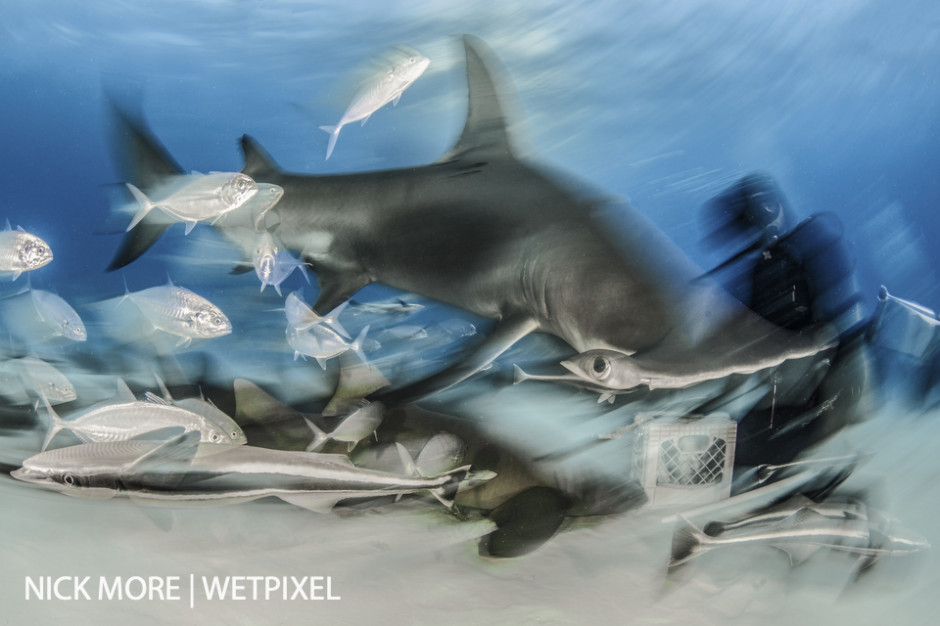
Great Hammerhead Shark with Diver. (Vincent Canabal) Bimini, Bahamas with Epic Diving (Baited) Settings: ISO200 f/20 1/8th sec. Accelerated Panning with Front Curtain Sync.
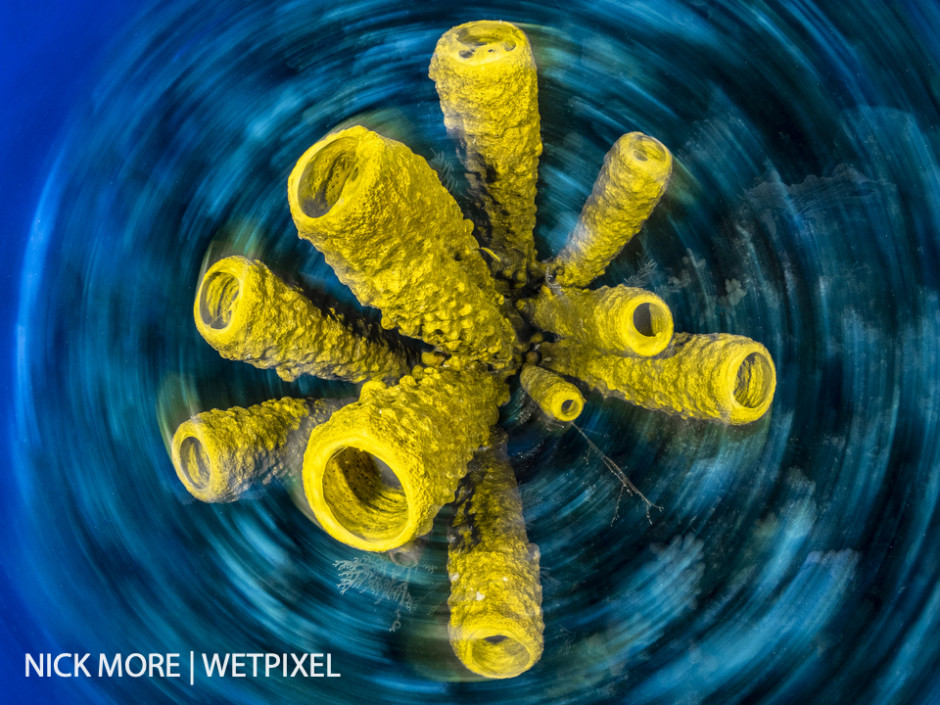
Tube Sponge Swirl. Yellow Tube Spnges, Grand Cayman. Settings: ISO400 f/11 1/15thsec. Spin / Twirl using Slow-Shutter Speed. Front Curtain Sync.
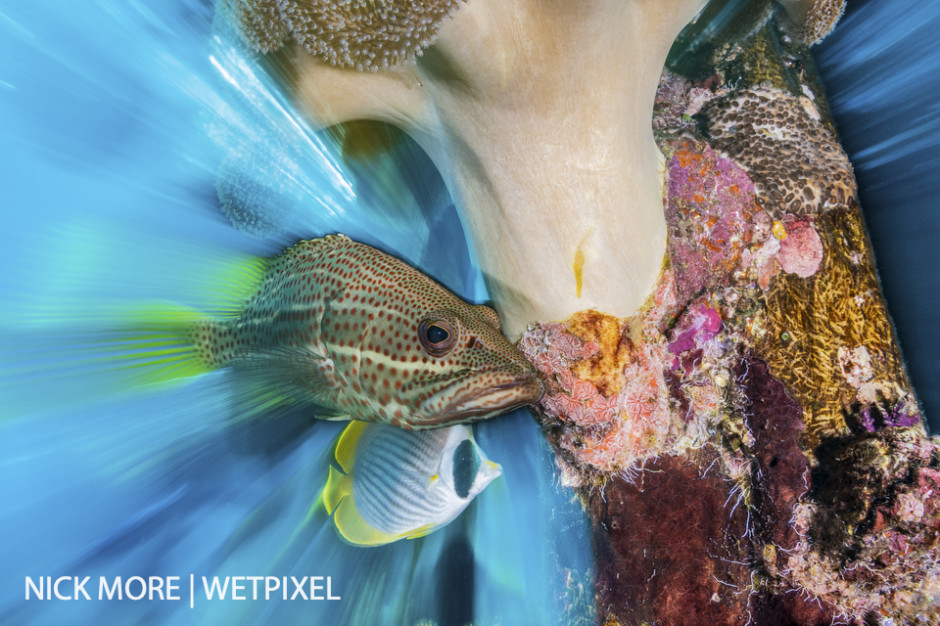
Slender Grouper Zoom Blur Portrait. Sauwandarek Jetty, Raja Ampat, West Papua, Indonesia. Settings: ISO200 f/20 1/8th sec. Zoom Blur with Front Curtain Sync.
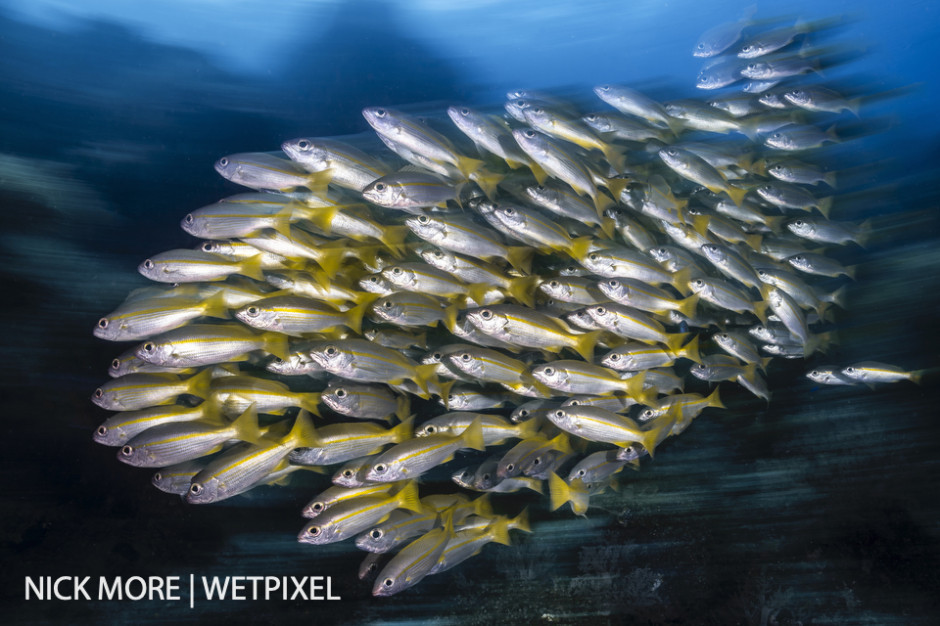
Snapper School. Birthday Cake, Misool, Raja Ampat, Indonesia. Settings: ISO100 f/18 1/8th sec. Accelerated Panning with Front Curtain Sync.

Klunzingers Wrasse, Red Sea, Egypt. Settings: ISO100 f/16 1/8th sec. Accelerated Panning with Front Curtain Sync.
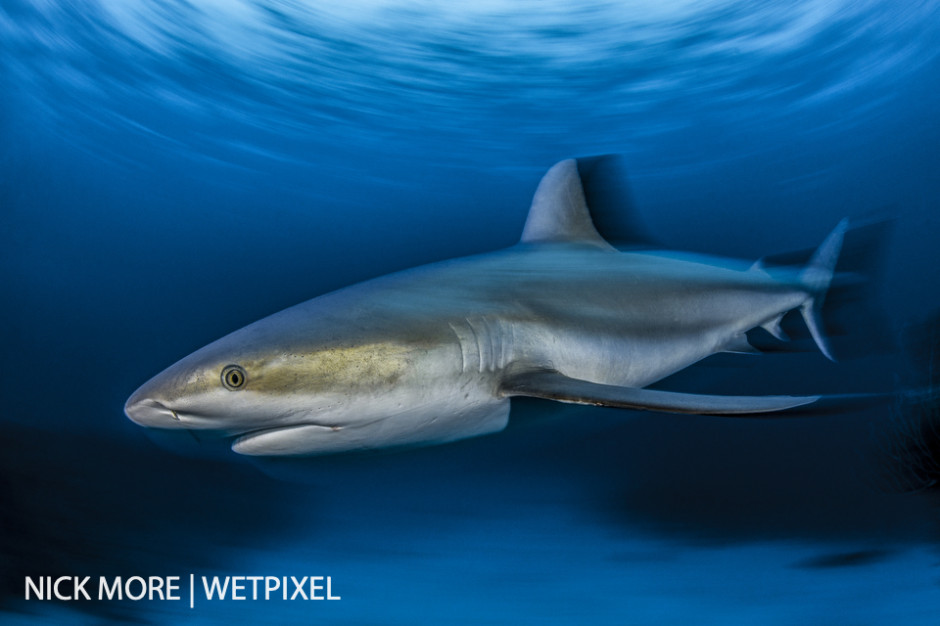
Caribbean Reef Shark Blur Portrait. Staurt Coves, Nassau, Bahamas. Settings: ISO200 f/18 1/8th sec. Accelerated Panning with Front Curtain Sync.
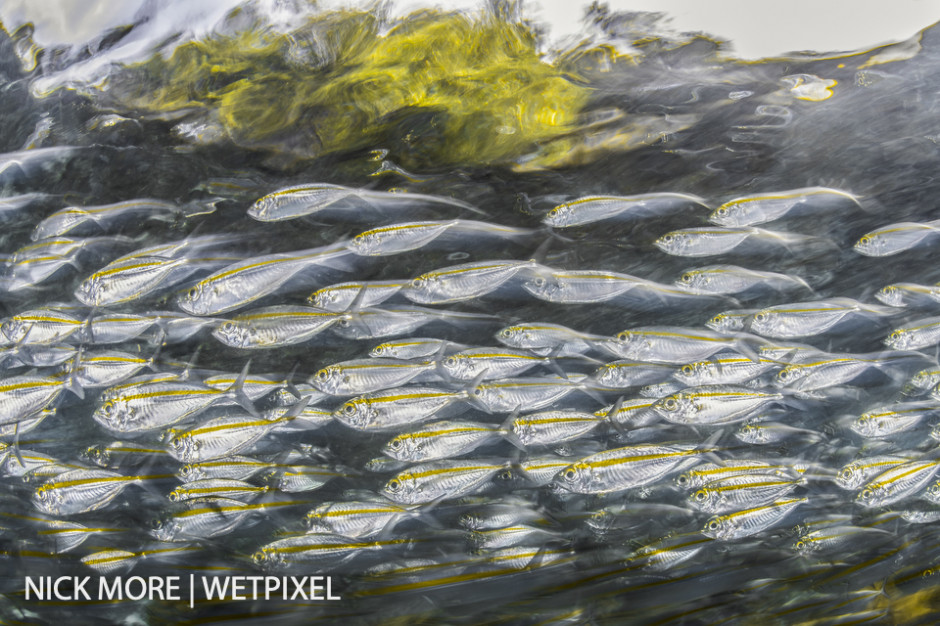
Racing Scad in very shallow water. Citrus Ridge, Raja Ampat, Indonesia. Settings: ISO80 f/16 1/8th sec. Rear Curtain Sync.
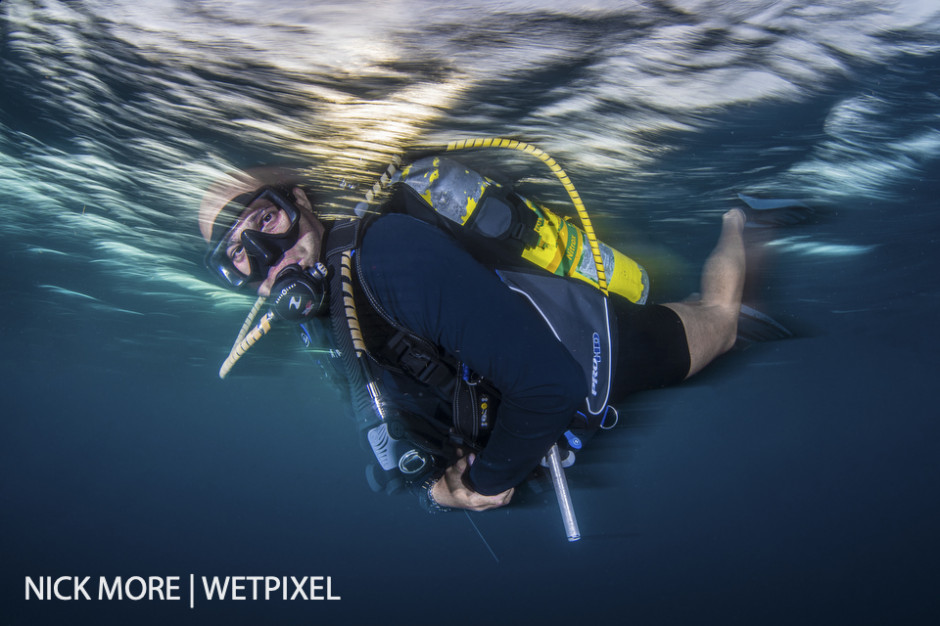
Diver Portrait at Sunset. Jardines de la Reina, Cuba. Settings: ISO200 f/14 1/8th sec. Accelerated Panning with Front Curtain Sync.
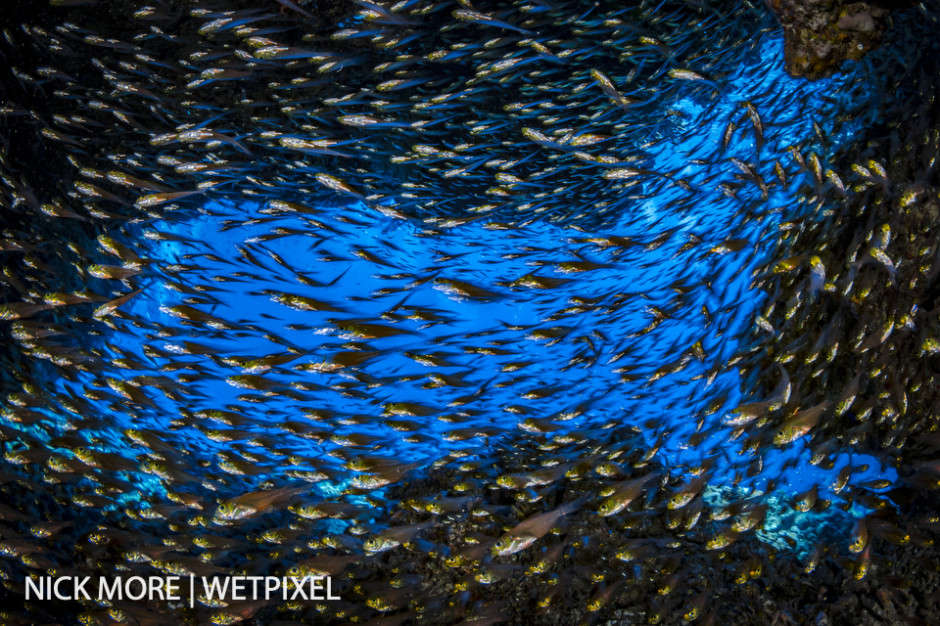
Glassfish (golden sweeper, Parapriacanthus ransonneti). Ras Mohammed National Park, Sinai, Egypt. Red Sea. Settings: ISO250 f/20 1/8th sec. Rear Curtain Sync.
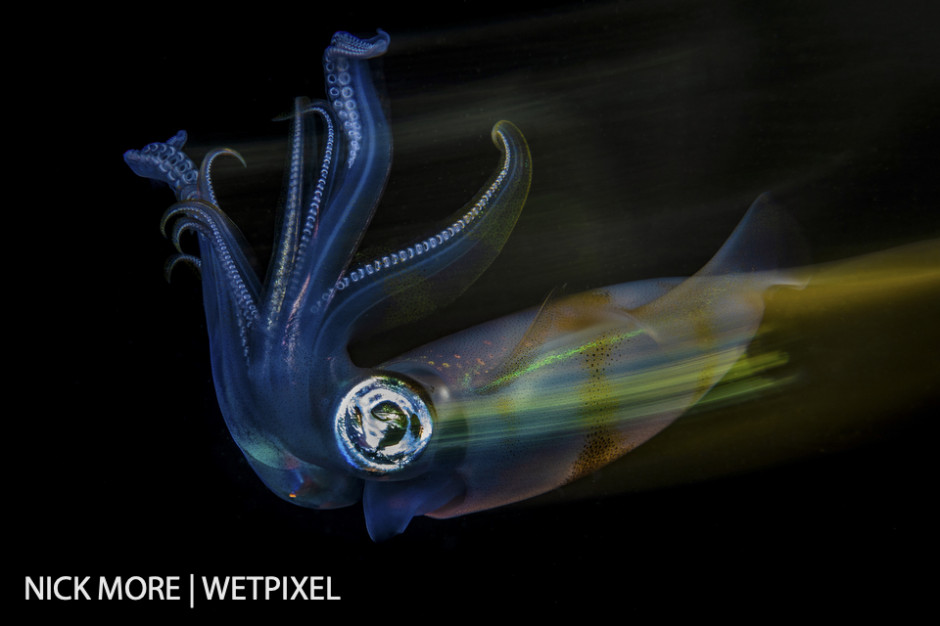
Bigfin Reef Squid Blur. Lembeh, N. Sulawesi, Indonesia. Settings: ISO320 f/20 1/6th sec. Accelerated Panning with Front Curtain Sync.
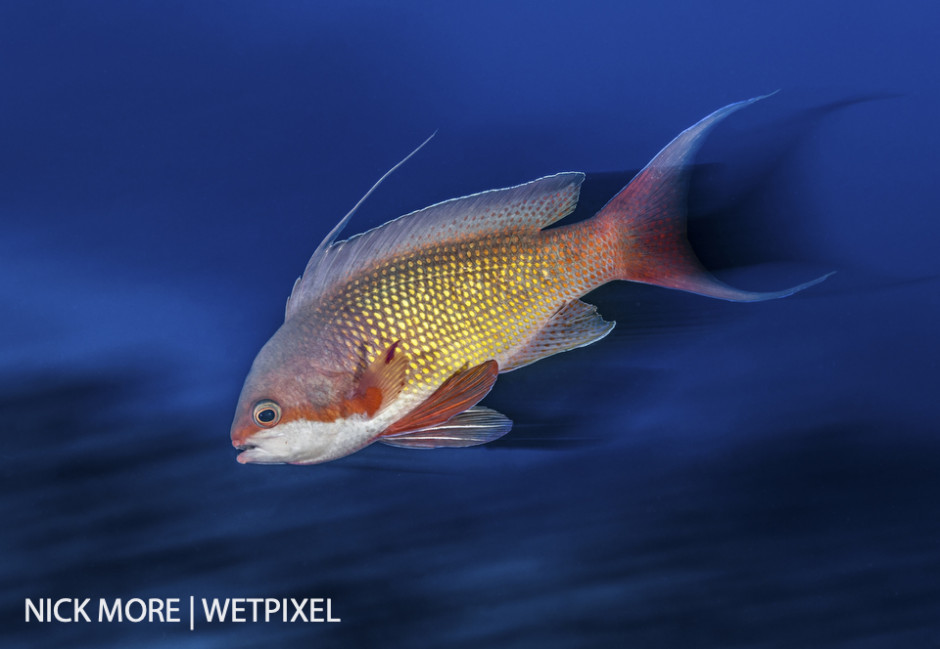
Red Sea Anthias (male), Red Sea, Egypt. Settings: ISO160 f/18 1/8th sec. Accelerated Panning with Front Curtain Sync.

Rabbit Fish Zoom Blur. Sauwandarek Jetty, Raja Ampat, West Papua, Indonesia. Settings: ISO200 f/20 1/8th sec. Zoom Blur with Front Curtain Sync. Awarded: British Underwater Photographer of the Year (UPY) 2020.
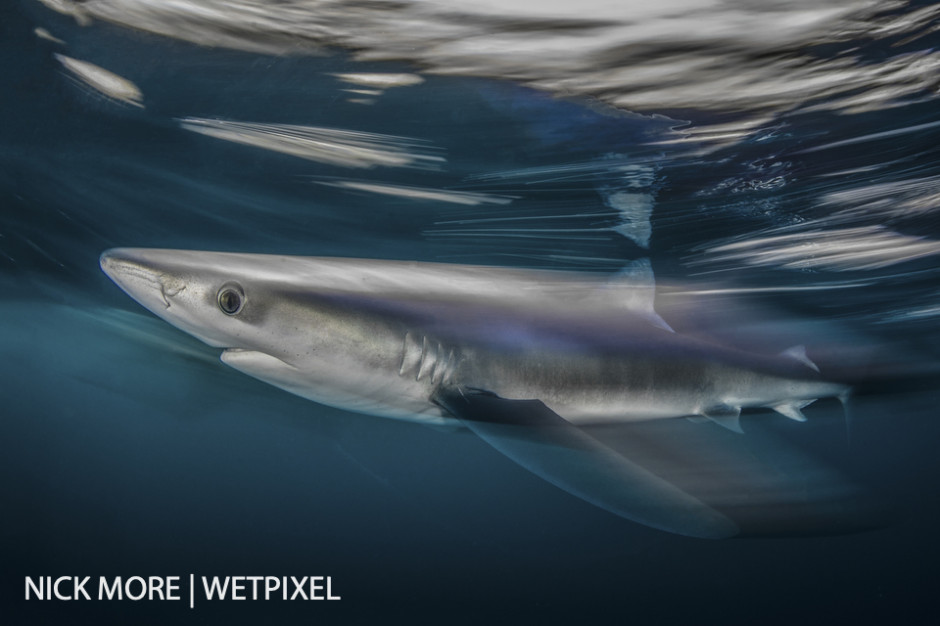
Blue Shark Blur. Cornwall, UK. Settings: f/22 1/8th ISO 125. Accelerated Panning with Front Curtain Sync. Awarded: Runner up, Underwater Photographer of the Year (UPY) 2017.
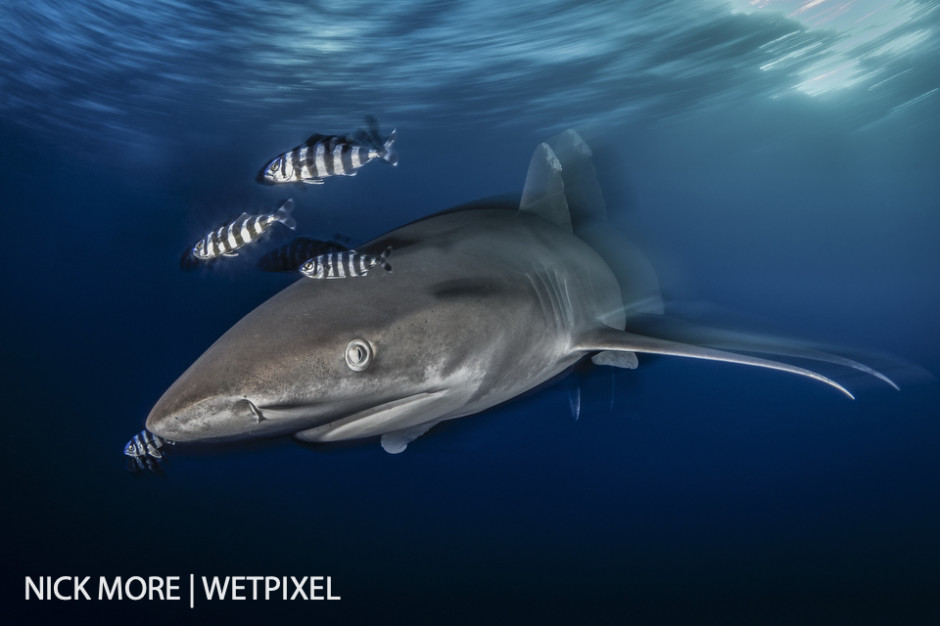
Oceanic Whitetip Shark with attendant Pilot Fish. Big Brother Island, Red Sea, Egypt. Settings: ISO100 f/18 1/8th sec. Accelerated Panning with Front Curtain Sync.